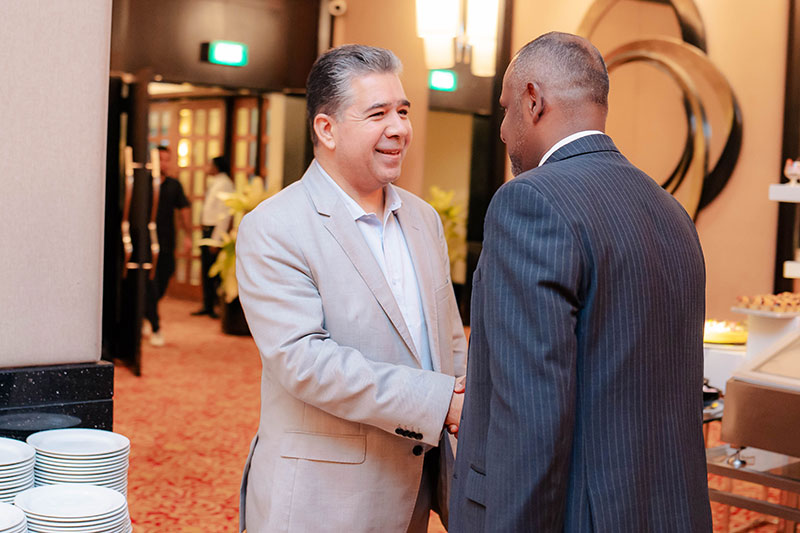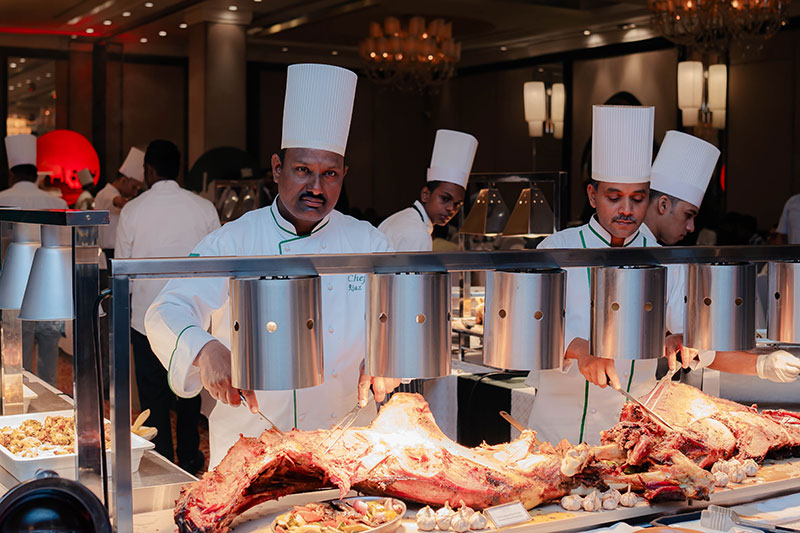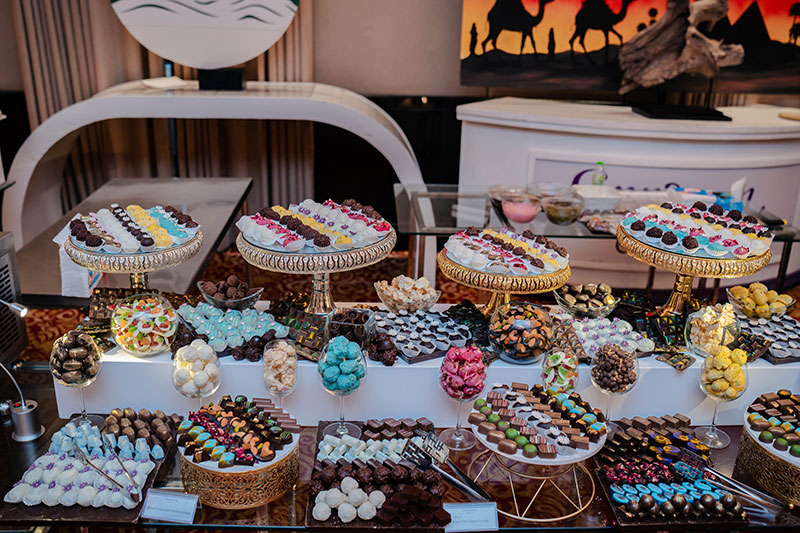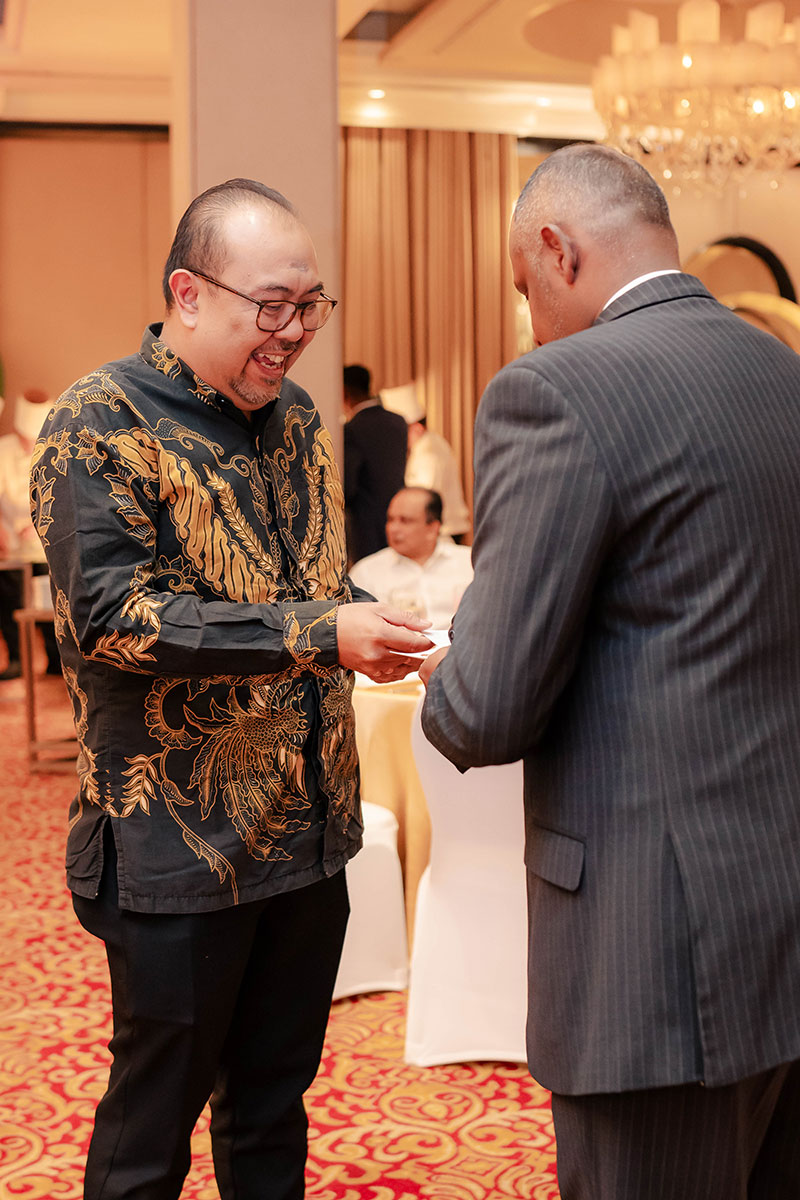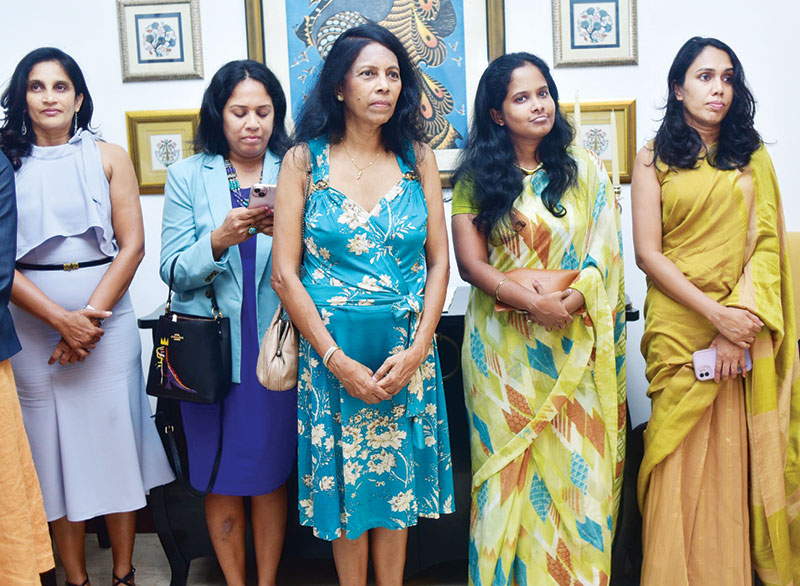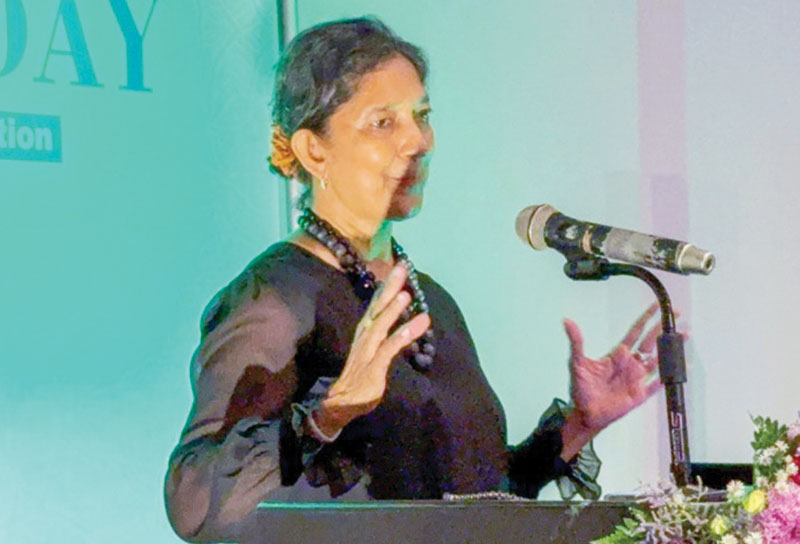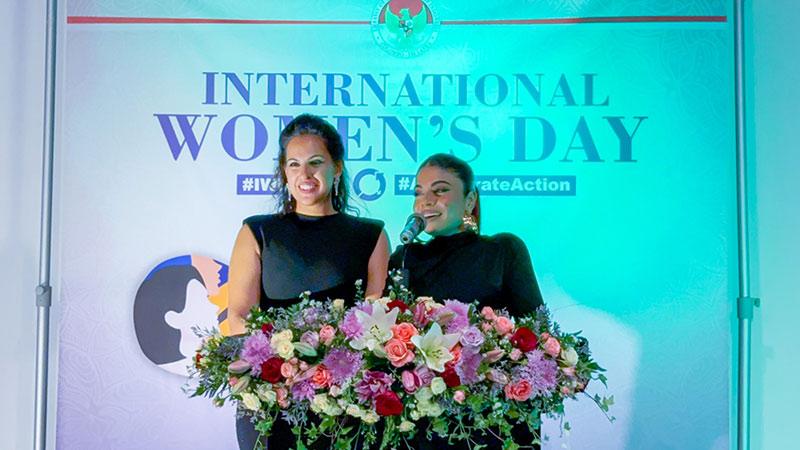Life style
The world”s Surprising fried chicken capital
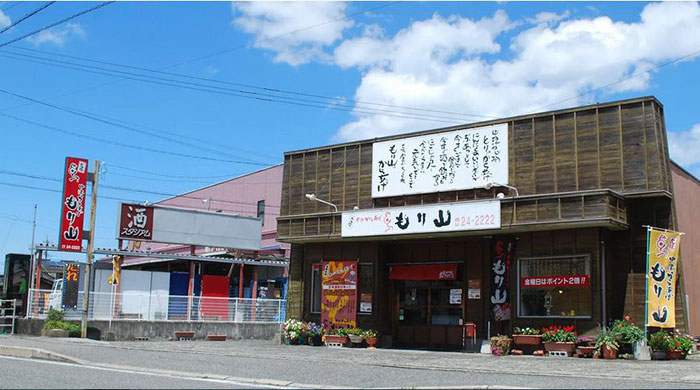
Why is the small town of Nakatsu – with its nearly 50 “karaage” shops – considered to have the best fried chicken in Japan, and quite possibly the world?e little karaage, one of the most popular snacks in Japan, is a delicate and intricate version of fried chicken that is a staple across the country.
This delightfully crunchy treat is so beloved that every year, hundreds of thousands of people vote in a country-wide competition to determine which karaage shop serves the best ones. While shops from massive metropolises like Tokyo, Kyoto and Osaka’s The Karaage Grand Prix is the annual competition in Japan whose winner gets to boast that they have the crispiest, juiciest, most flavourful fried chicken, and nearly 1,000 shops enter to compete. Up until 2022, this contest was based entirely on popularity, with common denizens getting to vote on their favourite places. But in 2023, the rules are changed Why does any of this matter? And why is this small town of Nakatsu considered to have the best fried chicken in Japan, and quite possibly the world?
With the added scrutiny and official tasters coming into play, Nakatsu City karaage shops have more to lose and more to prove than your average shop across the country. The city’s entire reputation as the karaage capital of Japan is now on the line and hundreds of years of cultural culinary history is at stake.
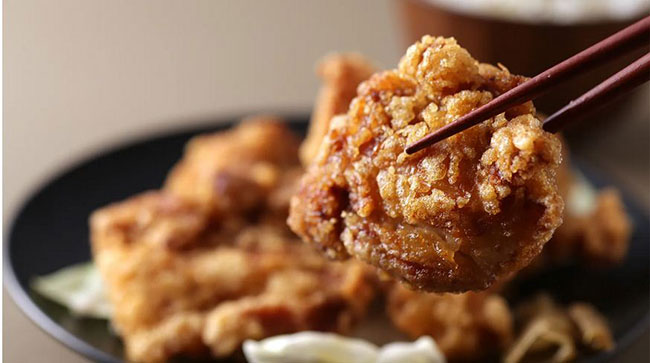
First, a definition of karaage (pronounced like “karate”, except you substitute a hard “g” for the “t”): it’s a type of fried chicken that’s famous in Japan for both its simplicity of execution and complexity of flavours. It’s a lightly battered bird, mainly using potato starch as a coating, that crisply covers nugget-sized pieces of chicken thighs, breasts, necks and wings that have been marinated in mixtures of soy sauce, ginger, salt, garlic, fruits and other highly secretive ingredients that gives off a taste explosion that dribbles down your chin with every bite.First, a definition of karaage (pronounced like “karate”, except you substitute a hard “g” for the “t”): it’s a type of fried chicken that’s famous in Japan for both its simplicity of execution and complexity of flavours. It’s a lightly battered bird, mainly using potato starch as a coating, that crisply covers nugget-sized pieces of chicken thighs, breasts, necks and wings that have been marinated in mixtures of soy sauce, ginger, salt, garlic, fruits and other highly secretive ingredients that gives off a taste explosion that dribbles down your chin with every bite.The Karaage Grand Prix is an annual competition for the best fried chicken in Japan (Credit: Karaage festival ExCo)
People line up around the block for their favourites and even the late Anthony Bourdain obsessed over them: “I’m addicted to these deep-fried chicken cutlets… It’s a guilty pleasure. I know exactly where to find a Lawson in Narita International Airport, and I never get on the plane without loading up on these bad boys.” There’s even a karaage movie produced by the Japan Karaage Association dubbing the savoury snack as the “ultimate national food”.
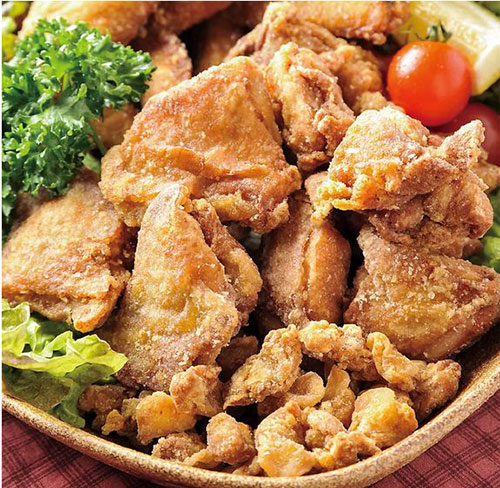
But fundamentally, karaage is the final result of a multi-generational history that spans continents, the age of exploration, cross-cultural pollination, famine and world wars. It’s a fried chicken unlike any other and it’s considered the soul food of Nakatsu.
The origins of karaage can be traced to the 16th Century when Portuguese missionaries arrived on Japanese shores of Kyushu Island through the port at Nagasaki and brought their fried cooking methods with them. Slowly, Japanese denizens began to adopt some of these Western ways into what today would be considered tempura. At the time, however, the Japanese diet was mainly pescatarian, which could be attributed to their Buddhist beliefs.
Eating chicken didn’t come into the picture until tragedy struck the island nation. During the Ky?h? era (1716-1736), a widespread famine practically wiped out the rice crop on the island of Kyushu and killed tens of thousands of people. According to Livestock Production in Kyushu (in Japanese), in order to restore finances, farmers were encouraged to do more poultry farming to sell more eggs and eventually people began to eat chicken once their egg-laying birds had passed their prime.
The next major Japanese dietary jump began in 1868, when the new Emperor of Japan embarked on a drastic reformation of society, adopting a cavalcade of Western ideas when it came to industrialisation, military technology and even people’s diets. Emperor Meiji opened the country’s borders and allowed more culinary influences from China and the West to permeate the culture – and that meant eating more meat.enkatori is run by Yasuhiro Fukuda, the son of the original owner of the first karaage shop in Kyushu
But it wasn’t until after World War two that fried chicken, and in particular karaage, became the touchstone that it is today. After the war, Japan was decimated, food shortages were rampant, and with a lack of rice, the Japanese diet dramatically changed. The United States was responsible for importing food and brought in wheat which led to more noodle-based dishes (like ramen), as well as broiler chickens, which are chickens raised for their meat and were easier and faster to raise than cows or pigs. The island of Kyushu had already become known as a poultry centre (today more than half of all broiler chickens come from Kyushu) and new methods of cooking meat quickly took off and helped nourish a starving country.
Karaage itself can trace its roots to a Chinese restaurant named Rairaiken in Nakatsu City’s next-door neighbour, Usa City. It was here in the late 1950s that the establishment began serving deep-fried chicken karaage as part of a set menu. From there, it jumped across the street to a small izakaya (tavern) named Shosuke, which learned the frying methods from Rairaiken. The owner of Shosuke was originally buying chickens from local farmers and selling them to butchers while his wife served karaage and sake to eager customers. But he had a problem: his karaage customers were primarily rice farmers who could only pay for his food and drinks when the rice harvest came in, so he was constantly scrambling for money and barely surviving as a business. At the same time, bigger farms started industrialising broiler chickens and his chicken-peddling business was becoming less profitable.
“Shosuke quit the izakaya and started the first take-out restaurant serving only karaage. He also switched his target to housewives who paid cash up front, instead of husbands who paid late and drank [too much] sake,” said Usa Karaage’s US president, Yuko Yoshitake.
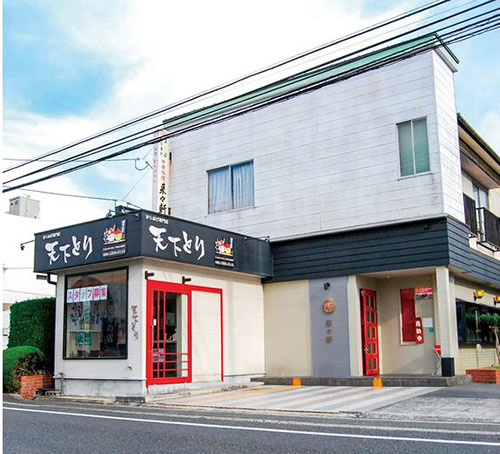
This pivot to only serving karaage became a major hit as residents of Usa immediately embraced this cheap, fast and delicious source of protein. Today, Usa boasts more than 40 karaage shops and is one of the hubs of this perfectly crisped fried delight. But its move to neighbouring Nakatsu is what gave this fried chicken its national and subsequent international reputation.
Two chefs, Arata Hosokawa and Shoji Moriyama were both obsessed with karaage, and both felt they could bring out more flavour from the fried food. According to Yoshitake, in 1970, each man opened his own karaage shop in Nakatsu where they refined the marinating process, adding pieces of apple, and brining the bird for a longer period to bring out more flavour in the chicken itself. The shops were instant hits and inspired a bevy of copycats that helped define Nakatsu as the heart and soul of karaage.Moriyama was the first ever champion of the Karaage Grand Prix
Today, chefs in Nakatsu have taken their karaage to the next level. A healthy competition between the nearly 50 shops has inspired chefs to tinker with everything from cooking times and batters to a variety of soy- and salt-based marinades. Nearly every shop in Nakatsu has a secret ingredient that they’re not willing to share and which separates their karaage from the rest.
Take Torishin, a shop run by Nakatsu’s resident karaage shokunin (master) Shinichi Sumi, a five-time Grand Gold Award winner at the Karaage Grand Prix. Sumi spent 15 years perfecting his karaage recipe. Today, he cooks every part of the chicken at separate temperatures and his karaage is consistently rated the best in Nakatsu.
Karaage Crawl
For the perfect Kyushu Karaage Crawl, start out in Usa at Tenkatori run by Yasuhiro Fukuda who is the son of the original owner of Rairaiken – the first karaage shop in Kyushu. From there, check out Chiemi, a woman-run shop helmed by Yoshimi Kanbara who has been making it out of her home for 43 years and only uses fresh oil. From there, head to Nakatsu and eat at Torishin for a foodie’s version, then check out Genkiya who specializes in chicken breasts, and finally make your way to Kokko-ya for a uniquely marinated bird that might just be the best of all.
Then there’s Takae Tateishi, one of the rare female karaage shop owners whose spot, Kokko-ya, is arguably the most unique in the city with her salt-rice-malt marinade and desire to do everything from scratch. “What I can say with confidence is that I carefully remove the extra fat from the chicken. I’m absolutely confident in how I prepare the meat,” said Tateishi, whose chicken has a softer texture and spicier flavour that fires up your mouth.
And then there’s Kouji Moriyama, whose shop Moriyama was the first ever champion of the Karaage Grand Prix and is the nephew of Nakatsu karaage’s founding father, Shoji Moriyama. He makes a salt-based crispy karaage that erupts with juices from every bite and has a mix of undisclosed fruits that infuses his chicken with exceptional flavours.
But karaage isn’t just something to eat in Nakatsu, it’s an entire identity. Every autumn, there’s Karafes, a karaage festival which attracts upwards of 50,000 people from around Japan and the world, and nearly every shop participates to drum up popularity for the city. The town also holds a Guinness World Record for the largest serving of fried chicken topping out at 1,667.301kg (3,675lb, 12oz) that was set in 2019.
Of those 40-plus shops in Nakatsu, everyone in the city has their personal favourite. It reminds them of their childhood. It’s a food that rose out of poverty, fed a starving island and became a savoury symbol that can now be found at weddings, birthdays and major celebrations including Christmas when millions of Japanese eat fried chicken. And the Karaage Grand Prix is their way to prove that this lineage makes their city the beating heart of fried chicken in Japan.
The Karaage Grand Prix started in Tokyo in 2010 as a national competition to rank karaage and promote the tasty treat around the country. Up until 2022, voting was entirely online and the most popular karaage shops typically won all the awards. According to Kouichiro Yagi of the Japan Karaage Association, “[in 2023] a taste test by the judges will be included to further improve the value of the awards.”
The judges will base their decisions on the frying colour, the batter, the harmony between the meat and the batter, the juiciness, the flavour, the cost effectiveness (how much you get for the price), and the temperature level (too much heat can cause burns).When you talk to the shop owners in Nakatsu, they’re borderline dismissive of the past competitions. But you could tell they all felt that this year was different. Shinichi Sumi of Torishin said, “The next one is real. I want the challenge and I’m going to try to win.”
The CEO of the Nakatsu Karaage Association, Masahiko Inoue, looks at the 2023 Grand Prix along with Nakatsu’s place in the karaage world in an existential way. “The next competition is important because people will know which shop is really number one. But ultimately, I want everyone to know that Nakatsu karaage is special. And that it is branded. The same way certain wagyu beef is branded. It’s like a seal of approval that it comes from Nakatsu.”
Karaage represents perseverance, it shows ingenuity, and it’s a reminder of how Japan overcame adversity. And for the residents of Nakatsu, it’s the soul food that simply feels like home. Karaage is fried chicken that has been lightly battered and marinated, judges are being brought in to taste test, and the true crown for the best karaage will ultimately be rewarded.
Why does any of this matter? And why is this small town of Nakatsu considered to have the best fried chicken in Japan, and quite possibly the world?
– BBC
Life style
Celebration of unity and tradition at Iftar dinner
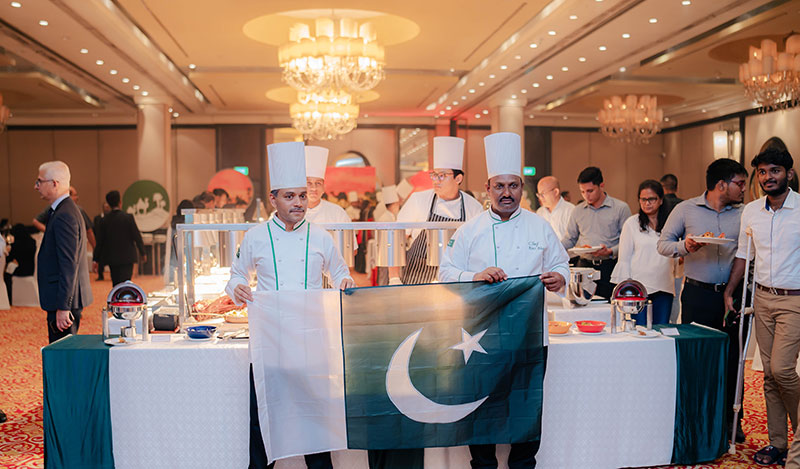
In a grand celebration of unity and tradition, Cinnamon Lakeside Colombo hosted an exclusive and elegant Iftar dinner at the prestigious King’s Court. This remarkable evening, hosted by Nazoomi Azhar, General Manager of Cinnamon Lakeside Colombo, brought together a distinguished gathering of ambassadors, key figures, top corporate executives, and esteemed members of the media.
The event showcased a spectacular array of culinary delights, with a highlight being the masterpieces crafted by renowned Pakistani Chef Riaz Bhatti. His exquisite creations, alongside an extensive selection of traditional and contemporary delicacies of Pakistani dishes, left guests in awe of the lavish spread and exceptional flavors.
Among the standout dishes of the evening were the rich and aromatic Mutton Raghni Josh, the flavorful Mutton Shahi Qorma, and the perfectly spiced Peshawari Beef Chapli Kabab. Guests also delighted in the Lahori Chicken Tikka Boti and the indulgent Chicken Peshawari Karahi, which added a taste of authenticity to the menu. The Iftar spread was further complemented by traditional desserts such as Gulab Jamun, Shahi Tukda, and Ras Malai, providing a sweet ending to the feast.
The atmosphere was one of warmth and hospitality, reflecting the spirit of Ramadan while offering a truly memorable experience. Guests were highly impressed with the impeccable service and the thoughtfully curated menu, making this Iftar dinner a standout occasion in Colombo’s social calendar.
Cinnamon Lakeside Colombo, under the leadership of Nazoomi Azhar, continues to set the benchmark for luxury hospitality, delivering unforgettable experiences through its commitment to excellence.
Life style
Women -building blocks in shaping history of Turkiye
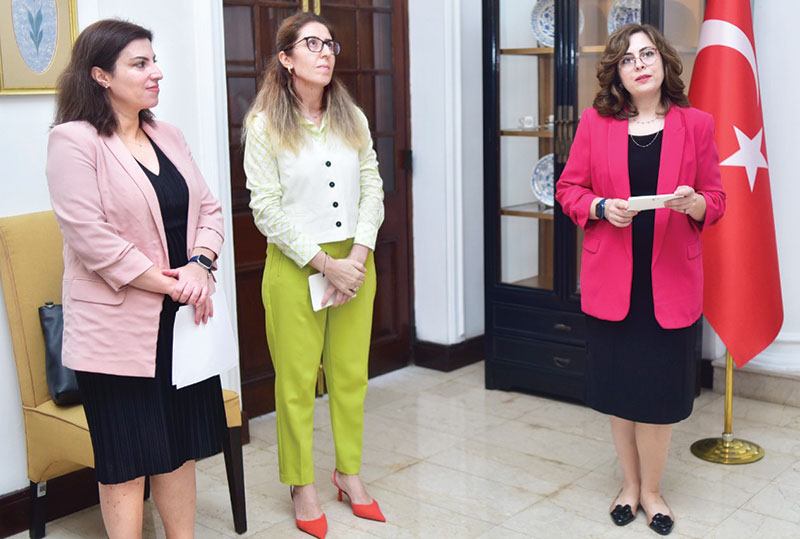
 In the Republic of Turkiye women have been one of the building blocks in shaping Turkiye for centuries. However, especially since the founding of the Republic, Turkiye has been one of the leading countries in the world, especially in terms of the political visibility of women. Women were given the right to vote long before women were given political rights in many democratic and modern countries.
In the Republic of Turkiye women have been one of the building blocks in shaping Turkiye for centuries. However, especially since the founding of the Republic, Turkiye has been one of the leading countries in the world, especially in terms of the political visibility of women. Women were given the right to vote long before women were given political rights in many democratic and modern countries.
Turkish women are known for their unwavering determination and resilience. They exhibit remarkable dedication and courage in pursuing their goals and challenge injustice. Their hard work and perseverence contribute to their advancement of society. These statements were expressed by the Deputy Chief of Mission of Turkiye M/S Merve Goozde Otlu at the residence of the Turkish Ambassador in Sri Lanka, on the occasion of the International Women’s Day.
This day is also important for Turkish women, who have played a vital role in shaping Turkish society, from the early days of our Republic to the present said the Deputy Chief of Mission. In her speech she also pointed out that the founder of the Republic, Mustafia Kemal Ataturk, has an important place in the hearts of all Turkish people, but his visionary leadership for women’s rights are especially precious for all women of Turkiye.
She explained “Ataturk strongly believed in women’s equality and emphasized that a modern and progressive society could only be achieved if women had equal opportunities as men’’
“Women were encouraged to participate in all areas of life, including education, work life and politics. One of the most remarkable steps Ataturk took was granting women the right to vote and as early as 1930, women were able to run for office at the local elections and in 1934 women were granted this right long before many other countries (One year after that, there were already 18 women MPs). When we look at Turkish history, we see countless inspiring women who have shaped our country, playing crucial roles achieving many milestones. These women have proved that Turkish women could achieve greatness in any field from science to business, from arts to sports, if given the opportunity, she remarked.
Turkish women have also made a significant contribution to diplomacy, a field often seen as male-dominated, she remarked.
For decades, Turkish women have been representing our country with strength and determination on the global stage. The first woman diplomat Mrs. Adile Ayda was recruited in 1932, while Ambassador Filiz Dinemen is the first woman Ambassador of Turkiye, assigned to the Hague in 1982.
Women representation has been increasing in the Ministry of Foreign Affairs, constituting almost 40% of the Ministry.
It is a personal honour for me to serve in a country like Sri Lanka, which gave the world the first female Prime Minister in history, Sirimavo Bandaranaike, she said with pride.
Her leadership showed that women can take on the highest responsibility and be a driving force not just for women but for the whole society.
The contribution of women in Turkiye in the field of Science and Technology is far reaching. She said in Turkiye, a prominent scientist who worked for NASA, whose research was instrumental in the legendary 1962 Apollo mission. She is Dihlhan Eryunt, was the recipient of the NASA Appolo Achievement Awards she said with pride.
The First Secretary, Imren Kaygisiz said Turkish women who have contributed to the development of the country and thier enduring impact on society who are still continuing to inspire strength,resilience and success of women
The Commercial Counsellor M/s Gamze Erc an also paid tribute to the founder of Modern Republic of Turkiye, Mustafa Kemal Ataturk who gave importance to education of Turkish women and leader believed that development of a nation depends on a strong education foundation.
The evening had all the trappings of glamour followed by high tea.
Life style
Sri Lanka showing strong commitment to gender equality
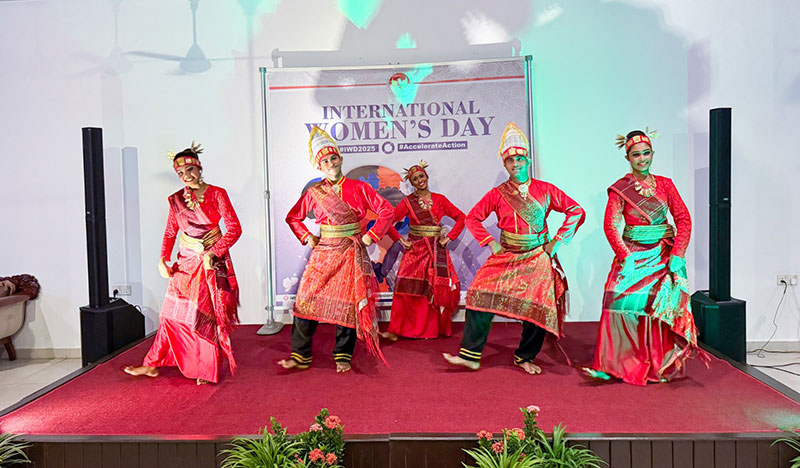
The Embassy of the Republic of Indonesia in sri Lanka hosted the International Women’s Day ceremony at thier residence.
Ambassador of Indonesia Dwi Gustina Tobing invited a large gathering of invitees including the Minister of Women and Child Affairs Saroja Savithri Paulraj who was the Chief Guest. CBL Group Managing Director Sheamalee Wickramasighe, popular musician Umaria Sinhawansa and Stephanie Siriwardena also addressed the gathering. The ambassador looking elegant was busy welcoming the guests at her residence.
An evening of camaraderie, glitz and glamour. The event featured an insightful session aimed to empower women, and served as a tribute to the commitment of women who has contributed immensely. The ambassador in her speech said by celebrating the achievements of women and amplifying their voices, we pave the way for a more inclusive and equitable society, where gender does not hinder opportunity but enriches collective experiences. Here is an excerpt from the ambassador’s speech.
A warm welcome to all of you. It is an honour to host this reception in commemoration of International Women’s Day 2025.
She said ” This year’s theme, “Accelerate Action”, is a powerful call to all of us. It underscores that equality cannot wait, and that all sectors of society must work together to speed up progress in women’s rights and empowerment.”
- CBL group managing director Sheamalee addressing the gathering
- Stephani and Umaria
Around the world, we have seen tremendous strides toward gender equality in politics, economics, and social spheres. Women are increasingly taking up leadership roles, contributing to economic growth, and shaping the future of our societies.
In Indonesia, we are proud of the progress we have made in advancing women’s participation. She said
She reiterated that 127 women were elected to parliament, making up 22.1% of the seats—the highest in our post-reform history. However, this is still below our target of 30%, which means there is room for improvement.
Our new cabinet includes 14 women, both as ministers and deputy ministers, demonstrating our commitment to gender-inclusive governance.
Beyond politics, women are the backbone of Indonesia’s economy. Micro, Small, and Medium Enterprises (MSMEs) contribute over 60% to the national GDP, and 64.5% of these businesses are managed by women.
Additionally, Indonesia ranks among the top four countries globally for female business leaders
She pointed out Sri Lanka, too, has made significant strides in women’s empowerment. When I met with Minister Saroja Savithri Paulraj last week, we discussed the progress Sri Lanka has made in increasing women’s representation in politics and the economy. From women entrepreneurs driving economic growth to initiatives supporting women in leadership, Sri Lanka is showing a strong commitment to gender equality.
Many countries have made progress in advancing women’s empowerment, yet, despite this progress, we must recognize that challenges remain. Women still face barriers to equal pay, leadership opportunities, financial inclusion, and social mobility. Gender-based violence, discrimination, and unequal access to resources continue to hinder the advancement of women in many parts of the world.
This is why collaboration is crucial. By sharing experiences, policies, and best practices, we can accelerate meaningful action to bridge the gender gap.
We must continue working together, fostering partnerships that empower women economically and socially. Indonesia is committed to strengthening collaboration with Sri Lanka and other nations to create more opportunities for women, recognizing their immense importance. Invitees were able to enjoy authentic Indonesian delicacies specially curated by the Ambassador herself.
By Zanita Careem
-

 Sports5 days ago
Sports5 days agoSri Lanka’s eternal search for the elusive all-rounder
-

 News4 days ago
News4 days agoBid to include genocide allegation against Sri Lanka in Canada’s school curriculum thwarted
-

 News6 days ago
News6 days agoGnanasara Thera urged to reveal masterminds behind Easter Sunday terror attacks
-

 Sports1 day ago
Sports1 day agoTo play or not to play is Richmond’s decision
-

 News5 days ago
News5 days agoComBank crowned Global Finance Best SME Bank in Sri Lanka for 3rd successive year
-

 Features5 days ago
Features5 days agoSanctions by The Unpunished
-

 Features5 days ago
Features5 days agoMore parliamentary giants I was privileged to know
-

 Latest News3 days ago
Latest News3 days agoIPL 2025: Rookies Ashwani and Rickelton lead Mumbai Indians to first win



